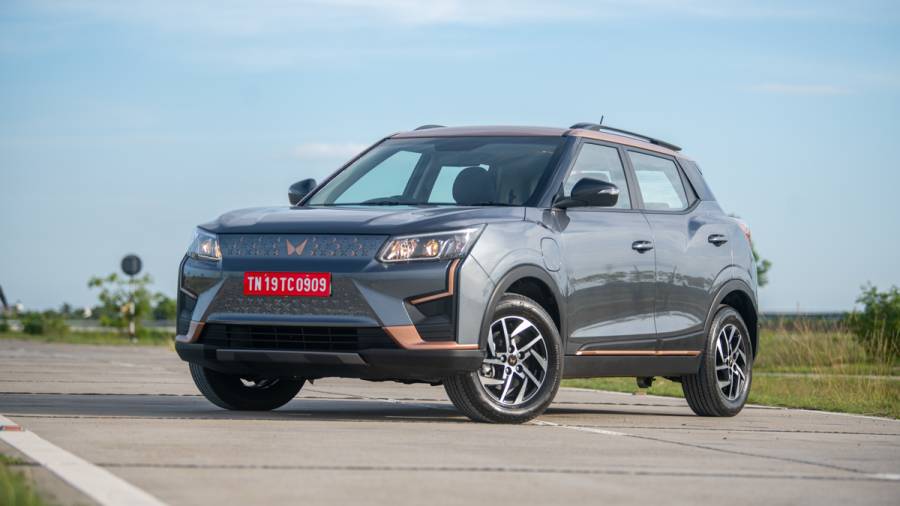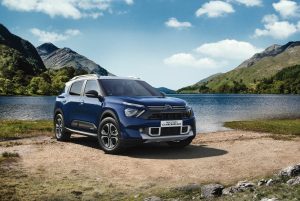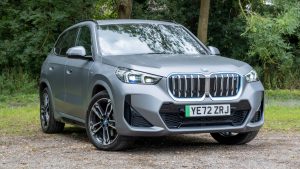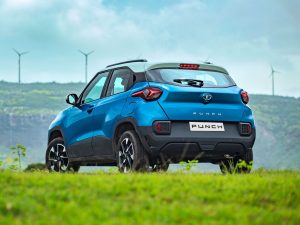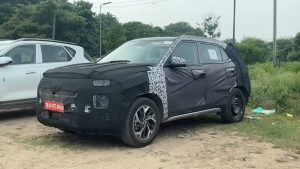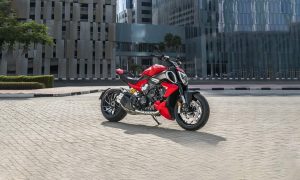Mahindra XUV400 Overview
Mahindra’s first effort at an EV is this one. The e-Verito was from the era when electric vehicles were still seen as myths, whereas the e20 was a rebadged and marginally improved Maini Reva. Therefore, the XUV400 is a suitable Mahindra and EV. Is it, though?
This XUV400 in the EL (the larger battery version) is being evaluated using the standard CarWale Road Test methodology. Additionally, an update has been released that adds eight new features that were not available (but should have been) when Mahindra first unveiled it.
Although there are similarities with the XUV300, the XUV400 has a longer and more muscular back end. Its proportions seem more nicer and more put together in metal. We really adore how unique the XUV400 is because to the contrast copper coating. All things considered, the XUV400 is stylish. That’s one half of the fight won—it feels unusual and looks amazing.The fog lamps, which were absent from the pre-production vehicle we previously drove, are a component of the update.
However, its interior lets go of the victory it had in the external appearance. This cabin feels like a cassette player in an era of internet streaming due to the paradigm shift in EVs. Mahindra had the chance, as it has consistently demonstrated (see the new XUV700 and Scorpio N), to make significant revisions to the XUV400, but that isn’t what happened in this instance.
Although the driver’s display has analogue needles, modern consumers do prefer all-digital displays, particularly in electric vehicles. With the XUV300, not even the cascading centre console has been altered. It contains numerous buttons that are no longer present in newer cars—mostly integrated into the touchscreen. Additionally, the touchscreen ought to have evolved with the times. particularly considering that Nexon EV, a direct opponent, has advanced significantly.
The XUV400 does a terrific job at managing interior space. The seats are supportive and well-padded, and even spending the entire day on the saddle didn’t become too old. The leatherette is of high quality. Large ORVMs contribute to the overall good visibility. The second row’s knee room is excellent, with a 2600mm wheelbase.
However, because the battery is positioned underneath, the seated position is a little awkward, with the knee lifted and the foot not having enough room on the uneven, raised floor. This can be partially resolved by placing an appropriate floor mat, although doing so will lower the seat-floor height even more. Furthermore, we wish the seat squab had been larger and longer. It is also quite unfortunate that there are no AC vents at the back, particularly during the summer.
The XUV400’s longer footprint does have one advantage, though: a larger boot. The XUV400 delivers 378 litres of boot space in this instance, which is more than the 350 litres of the Nexon EV. The XUV300 has 257 litres. There is enough on door pads and in the armrest cup holders for the backseat passengers. However, of all the straps we have seen thus far, the ones utilised for pockets behind the front seats are the least useful. It only contains a file or a few papers. There are functional cupholders on the central console, but there isn’t room to lay your smartphone down there either.
The XUV400 has a respectable feature list but lacks a few contemporary comforts. Its interior is antiquated. It does have a tyre-position display, auto wipers, a reverse camera, an electric sunroof, smartphone connectivity in the touchscreen, and automatic headlamps with projectors. The XUV400 has six airbags, disc brakes on the back, ISOFIX, ABS, and EBD, as well as an IP67 safety grade for batteries.
Yet, a number of features are lacking, such as wireless charging, automated air conditioning, brake-energy regeneration modes, rear air vents, and ventilated seats.Mahindra has now equipped the XUV400 with eight more features: cruise control, six speakers, fog lamps, auto-dimming IRVM, and, most notably, traction control with brake aid and hill control.
When you get moving, the XUV400 is silent, smooth, and blazingly fast in true EV flair. With the D mode’s creep function, it begins with a comforting linearity. Additionally, the XUV400 is smooth and silent at moderate speeds when it is moving. It had a lot of wheelspin when you depressed the throttle because it had just a little over 300Nm of twisting force to work with and no traction control at first. Since the ESP arrived, this has been mostly resolved. It no longer has the tire-smoking drama as it gets off the line, and it doesn’t feel unsteady as quickly when you try to corner with a little additional speed.
When you release the throttle, there is some motor retardation, but you are not able to choose the brake energy regen. While the regen hardly stops the car at all, the L mode attempts to mimic a one-pedal arrangement. Here, too, there are three drive modes. With its top speed restricted to 90 kmph, the XUV400 seems like it’s on a tight leash when in the default Fun (Eco) setting. In many ways, the Fast does feel liberated from the aforementioned tether. However, the most enjoyable option is the Fearless (sport) mode.
The XUV400 demonstrated a 9.18-second 0-100 kmph acceleration time in the Fearless mode when tested against our VBox. The XUV400 achieved very rapid roll-on timings: 4.83 seconds for runs between 20 and 80 kmph and 6.11 seconds for runs between 40 and 100 kmph. In addition, the roll-on accelerations behave far better than they did in the version without ESP. Therefore, even though there aren’t many differences, it’s still preferable to use the traction control safety net when driving.
The XUV400’s steering responsiveness is altered by the drive modes. The steering is really light in Fun; it improves in Fast when weight is added, even if it still feels fake. Furthermore, the steering is moderately weighted but manageable in the Furious mode. However, because it needs a lot of turn-in inputs, the steering is not the fastest available. However, the turn-in is pleasant and manageable inside the limits of the city, with good returnability.
Regarding ride quality, at low speeds, the XUV400 exhibits pliability and good absorption capacity. It smoothly absorbs abrupt creases and bumps, while the cabin scarcely muffles any thuds. The XUV400 was able to avoid uneven pavement on all of the routes we drove it on and maintained its level surface even at higher speeds.
The range test was conducted using the factory settings, just like it was for every EV at CarWale. This XUV400 with its EL version and 39.4kWh battery pack travelled 282.3 km on a full charge in real-world conditions. With 280 kilometres of displayed range and a full charge, we began the test.
We observed that the MID’s range and battery percentage decreased gradually rather than suddenly under real-world circumstances. Both the trip and the range that was shown were fairly accurate the entire time (about 275-285 km when the trip and range were combined). While we tested in the Fun mode by default, the real-world range would have been around 261.1 km in the Fast and 230.8 km in the Furious drive modes. Although AC is used during testing, the range would still fall well short of the 456 km stated range even without it.
It should be mentioned that the limp mode activates when the battery falls below 10%. When it does, the speed drops to 40 kmph, and shifting the drive mode has no effect. But up till 4%, the AC functions perfectly. The speed limit drops further below that, barely reaching the maximum speed of 7 kmph. This is useful if the charger is a distance away, but driving the final few km requires a lot of patience.
There are two different battery packs available: a 39.4kWh unit with a stated range of 456 km and a 34.5kWh unit with a range of 375 km. Additionally, the 39.4kWh model comes with a 7.2kWh fast charger, while the earlier model is also available with 3.3kW. The XUV400 is now available in four models, with prices ranging from Rs 17.03 lakh to Rs 20.21 lakh (OTR Mumbai).
Even if the XUV400 may not be Mahindra’s first attempt at an electric vehicle, it still seems like a pioneering effort that will open the door to greater things in the future. The XUV400 may seem like Mahindra has rushed into electrification and is keeping the best for something else, like the future XUV700 EV or production-ready versions of BE05/07/09. This is in contrast to Mahindra’s other SUVs, the XUV700, Thar, and Scorpio N.

